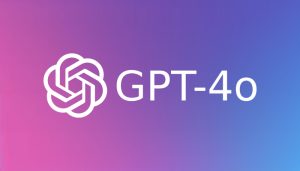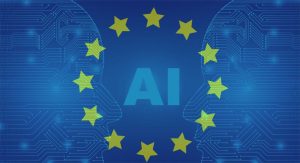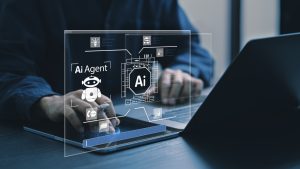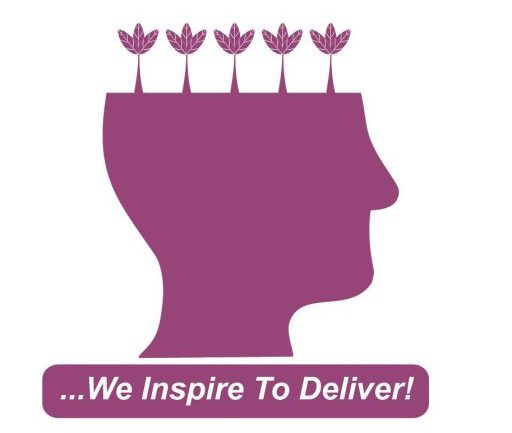Hey, Tech enthusiast! Your Daily Dose of Tech This Thursday is here @DawentsIT …We Inspire To Deliver!
Your Daily Dose Of Technology News – August 28, 2025.
1. AI And Large Models:

* OpenAI releases GPT-4o Pro/Enterprise updates and new “Tooling” features-
– OpenAI rolled out incremental upgrades to GPT-4o (multimodal) for Pro and Enterprise customers, emphasizing faster response times, lower latency, and expanded context windows (reports suggest 1–2 million token windows for enterprise customers). New “Tooling” integrations let models call customers’ internal APIs with safer, authenticated connectors and offer auto-generated code for data pipelines.
– Context: OpenAI continues to focus on enterprise adoption and on-model integrations that reduce engineering lift. The safety/guardrails emphasis reflects regulatory pressure and customer demand for controls.
– Implication: Enterprises can build richer, secure workflows (RAG, retrieval agents, code generation) faster, increasing ML use in core operations.
– Google DeepMind and Anthropic updates
– Google’s DeepMind/Google Brain published papers/announcements around more efficient reasoning via retrieval + chain-of-thought distillation techniques; Google announced tighter Vertex AI-first tooling for integrating large vision-language models into Android and Chrome.
– Anthropic introduced Claude 3.2 (enterprise variant), with improved “contextual memory” for multi-session tasks and latency optimizations; they emphasized red-team testing and expanded their “Constitutional AI” guardrails.
– Context/Implication: Big AI vendors are pushing both performance and safety; competition centers on multimodal capabilities, latency, and enterprise controls.
– AI chip and model supply chain updates
– NVIDIA’s H100 and next-gen GH200 shipments steady; new data center GPU SKUs for energy-efficient inference announced for late 2025.
– Startups building domain-specific accelerators (genomics, robotics) reported fresh funding rounds (see startups section).
– Implication: Hardware vendors balance demand for massive training with the growing appetite for cheaper inference hardware; energy efficiency remains central.
In Other News:
2. Cloud, Enterprise Software, And Developer Platforms:
– AWS, Microsoft Azure, Google Cloud AI integrations
– Cloud providers released new model-serving and managed data-mesh tools—AWS updated Bedrock with low-latency edge serving; Azure emphasized Copilot integration across Microsoft 365 and Azure OpenAI improvements; Google Cloud enhanced Vertex AI with cost-aware inference and multi-cloud deployment tooling.
– Enterprise focus is on governance, observability, and cost controls for model deployment.
– Dev tools and GitHub/CI updates
– GitHub and GitLab introduced more advanced AI-assisted coding features and security scanning integrations to detect model hallucinations in code-gen pipelines. Observability vendors added AI-based anomaly detection features.
3. Regulation, Policy, And Legal:

– EU AI Act and national implementations
– EU member states continue working to implement the AI Act; regulators issued clarifications on “high-risk” systems and obligations for model transparency, documentation, and post-market monitoring. Several tech companies urged clearer rules on model auditing and trade secrets.
– Implication: Companies will need operational compliance programs for data lineage, model cards, and incident reporting.
– US policy movements
– The US federal government advanced guidance on critical software security and is debating AI-specific regulations; Congress hearings continue regarding AI risk, data use, and liability. Export-control discussions regarding advanced chips to certain countries remain active.
– Antitrust/competition
– Investigations and regulatory scrutiny into big cloud/AI players continue in multiple jurisdictions; regulators are signaling willingness to take action around anti-competitive bundling and data access.
4. Consumer Tech And Devices:
– Apple fall hardware rumors and iOS 18 public beta chatter
– Leaks and analyst reports pointed to an Apple event in October that will likely include new iPhone models with improved on-device AI features, updated Apple Silicon chips for Macs, and new mixed-reality headset details; iOS 18 public beta traction noted with developer previews focusing on smarter on-device AI experiences and battery optimizations.
– Implication: Apple’s push for on-device AI aims to differentiate via privacy and integration across its ecosystem.
– Meta Quest/VR and Apple Vision Pro competition
– Meta announced Quest software updates emphasizing mixed-reality productivity features (piquing enterprise interest), and third-party headset makers continue to offer mid-range XR devices. Apple hinted at broader Vision platform capabilities for developers.
– Implication: VR/AR continues to diversify: high-end/premium (Apple), social/consumer (Meta), and enterprise/industrial use cases gaining momentum.
5. Chips, Semiconductors, And Infrastructure:
– Taiwan/US semiconductor diplomacy and investments
– Reports highlighted new US incentives and private spending commitments aimed at expanding fab capacity outside Taiwan. Taiwan fabs confirmed capacity expansion plans but warned lead times remain long.
– Context: Geopolitics keeps reshaping supply chains; foundry capacity and packaging/OSAT remain bottlenecks.
– Intel and TSMC roadmap notes
– Intel confirmed progress on its next-gen process nodes and announced partnerships for packaging (Foveros/EMIB) to accelerate chiplets. TSMC unveiled capacity plans for advanced nodes and advanced packaging centers in multiple regions.
– Implication: Continued investment in packaging/chiplets as a way to extend Moore’s Law gains and mitigate single-node risks.
Odds And Ends:
6. Cybersecurity And Privacy:

– Major breaches and vulnerability news
– Several mid-size breaches disclosed this week involved exposed data tied to insufficiently secured cloud storage buckets and misconfigured APIs. A notable vulnerability in a widely used open-source library prompted patches and urgent advisories; vendors scrambled to provide backports.
– Implication: The shift to cloud and faster deployment continues to create configuration and dependency risks; companies are accelerating DevSecOps adoption and SBOM (Software Bill of Materials) practices.
– AI-enabled cyber threats
– Reports underscore increased use of LLMs by threat actors to automate phishing campaigns, generate polymorphic malware code, and social-engineer targets. Security vendors responded with AI-detection heuristics and behavior-based monitoring.
– Takeaway: Defenders are racing to adapt tooling, adding AI-based detection and identity-protection measures.
7. Startups, Funding, And M&A:
– Funding environment and notable rounds
– Venture funding remains selective but active in deep tech, AI infrastructure, climate tech, and biotech automation. Several AI-infrastructure startups closed Series B/C rounds (tens to hundreds of millions), and a few niche hardware startups secured growth financing for domain-specific accelerators.
– M&A: A few mid-sized acquisitions occurred where cloud/platform incumbents bought startups to plug gaps in observability, vector DBs, or identity tools. Big players continue to selectively acquire capabilities in safety, privacy, or vertical AI.
– Layoffs and hiring trends
– Tech layoffs and restructuring continued in some consumer/social segments, while hiring surges persist in AI, chip design, and enterprise security teams.
8. Research Highlights:

– Multiple SaaS vendors launched AI copilots
– Several major SaaS vendors announced domain-specific “copilots” (sales, HR, finance) that promise to automate workflows using integrated RAG and secure connectors to enterprise data stores.
– New phones/accessory announcements
– A mid-range Android vendor launched a phone with on-device NPU optimizations marketed for AI apps; several accessory makers announced new AI-powered earbuds with improved on-device voice separation.
– Autonomous vehicles and robotics
– A robotics startup unveiled a warehouse robot with improved vision-language coordination, and an autonomous driving company announced expanded pilot programs in a second city, focusing on low-speed last-mile delivery.
Summary:
– Breakthroughs in energy-efficient model training and multimodal research
– Academic and industry labs published incremental advances in low-precision training, sparse/dynamic models, and better multimodal alignment—aimed at reducing cost and energy for large-scale models.
– Quantum computing
– Progress continued in error mitigation and benchmarking; short-term practical applications remain niche, but partnerships between cloud vendors and quantum hardware startups expanded access for developers and researchers.
If you need a summary on any specific topic or more detailed information on emerging tech trends, feel free to ask us @DawentsIT or visit our website at www.dawentsit.com
Follow us for updated news, articles, and videos. Read more on https://dawentsit.com/ #Technology #DawentsIT #TechnologyNews #Tech #AI #Regulation #OpenAI #AWS #MicrosoftAzure #GoogleCloud #Microsoft365 #NVIDIA #AllThingsTechnologyNews #AllThingsTechnologyNewsToday #WeInspireToDeliver
